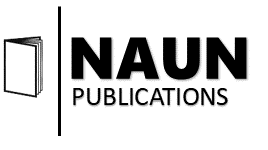Evaluation of 6 DOF Robotic Arm Using Leap Motion Sensor
Authors: Mohanad Mezher, Amjed Razzaq Al Abbas
Abstract: Due to their increased functionality, robotic arms provide a well-organized method for developing assistive devices. By 2035, statistics indicate that half of Germany’s population will be over the age of fifty, and every third person will be over the age of sixty. These aging societies face numerous obstacles when it comes to performing basic activities of daily living, or ""ADLs."" A growing body of research is focusing on Ambient Assisted Living, or ""AAL,"" as a novel approach to addressing the needs of elderly people. A critical objective of AAL is to improve the quality of life for the elderly and disabled and to assist them in maintaining an independent lifestyle. Robotics and technology-enabled environments will be critical in enabling elderly and physically disabled people to maintain a self-determined, independent lifestyle in their familiar surroundings. The purpose of this article is to propose the implementation of a novel intuitive and adaptive manipulation scheme by creating a human-machine communication interface between the Leap Motion controller and the 6-DOF Jaco robotic arm. An algorithm is developed to optimize the mapping between the user’s hand movement and the Jaco arm, as tracked by the Leap Motion controller. By constantly adapting to the user’s hand tremor or shake, the system should enable a more natural human-computer interaction and smooth manipulation of the robotic arm. The implementation would significantly improve people’s quality of life, particularly those with upper limb problems, by assisting them in performing several essential Activities of Daily Living ""ADLs."" The applications of this human-robot interaction will be discussed in relation to Ambient Assisted Living, with the introduction of several use case scenarios.
Pages: 29-38
DOI: 10.46300/9106.2023.17.3
International Journal of Circuits, Systems and Signal Processing, E-ISSN: 1998-4464, Volume 17, 2023, Art. #3
PDF DOI XML
Certification
